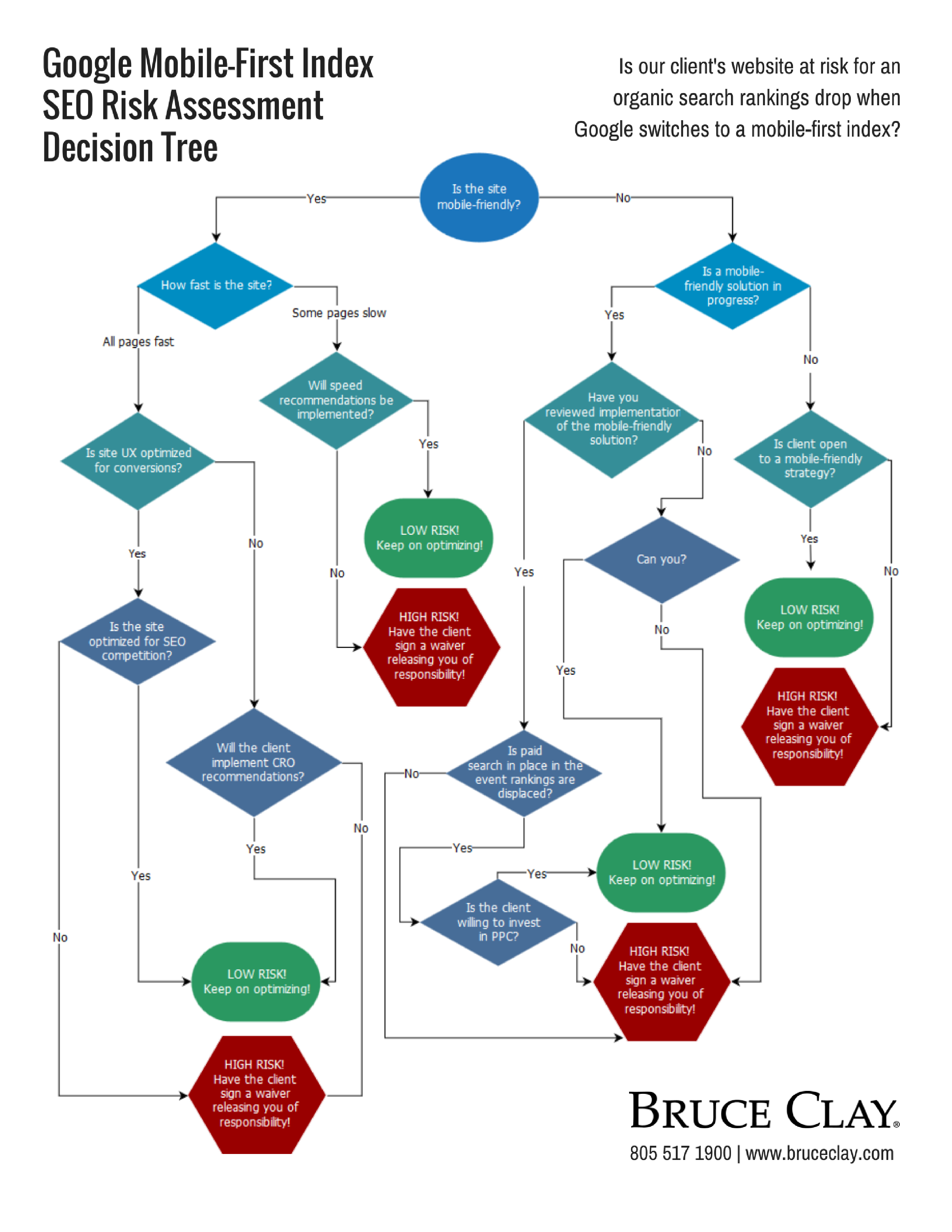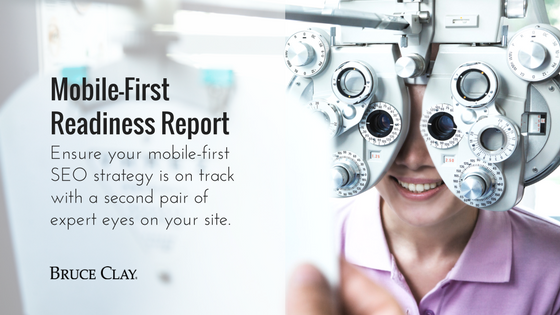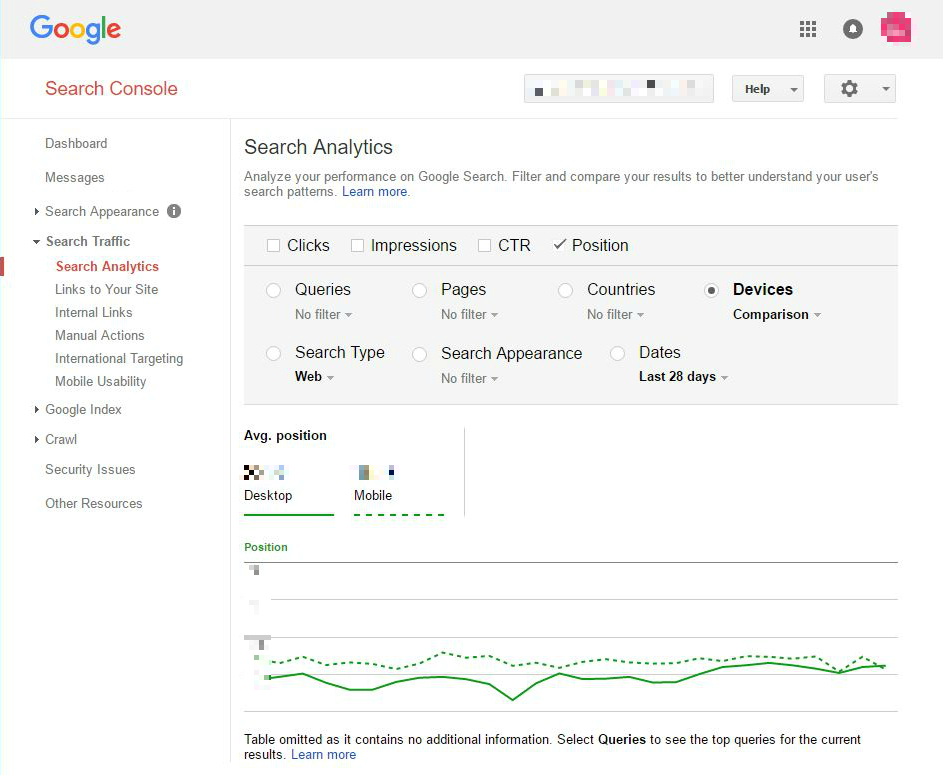How to Know If You’re at Risk When Google Switches to a Mobile-First Index (Flowchart) was originally published on BruceClay.com, home of expert search engine optimization tips.
I’d like to put your minds at ease. Or alert you to an upcoming risk. I guess we’ll see which camp you’re in.
Over the course of the year, Google is going to turn up the dial on its mobile-first index. What’s that? Google is moving toward analyzing and ranking the mobile version of websites and not the desktop version, as they do now.
Exactly when the switch will be 100% is a mystery. Gary Illyes suggested it could be in 2018. Yet we know that Google rolls out algorithm and infrastructure changes gradually and with plenty of testing. We are likely witnessing mobile-first SERPs today to some degree.
With the switch to a mobile-first index, you’ll either be in good shape or you’re going to feel the pain of a major loss in organic search traffic.
As an SEO services company we are busy doing risk assessments for clients, identifying exactly how ready a website is for the mobile-first index.
To help you get a sense of how prepared you are for a Google index that’s focused on the mobile website experience, we created a decision tree to assess a website as low risk or high risk. For a refresher on how to satisfy a mobile searcher, take a look at our SEO Tutorial step on Mobile SEO and UX Optimization.
What does your path to mobile-first index readiness look like? Here’s what we look for when we do a mobile-first readiness analysis of a client’s site.

Click image to enlarge. Click this text to download as PDF.
Assessing Your Risk in Google’s Mobile-First Index
This agency signed on to the mission of helping businesses succeed online, but when more and more factors are rapidly changing, our ability to institute timely change diminishes. So we want everyone to know what’s at stake if every action isn’t taken to be mobile-friendly.
If a client’s site does not perform well on a mobile browser, this is a problem. The mobile experience is how we serve connected consumers. If there is any issue, then it’s our job as the SEO expert to discuss this risk with our clients.
If a client has a mobile-friendly site, it’s our job to evaluate if the mobile site contains the same content as served on the desktop. If the content is different, then the client is at risk.
If a client is unable to optimize for site speed or for conversions, or if they are not working on a solution to a mobile-friendly site, then this client should acknowledge the risk of losing rankings.
How do we check if a client site is going to suffer a drop in rankings and traffic when the mobile-first index goes live?
Right at this moment we can look in Google Search Console to compare mobile and desktop rankings. You can too.
How to Compare Your Mobile Rankings and Desktop Rankings in Google Search Console
- Go to your site in Google Search Console.
- Go to Search Traffic > Search Analytics.
- Select “Position” and “Devices”.
- Select the filter to compare mobile vs. desktop.
- Is your average position for mobile higher or lower than for desktop?
If your average mobile rankings are worse than your average desktop rankings, you’re at risk when the mobile-first index switch occurs.
Calculating the Impact on Your Business
If I could stress three things, consider this.
- To be mobile-friendly goes beyond having a responsive website. It’s critical to match the content on the desktop site to the mobile user experience. A mobile-friendly website doesn’t merely mimic the desktop. In fact, a responsive site can have lower conversion rates if the mobile UX isn’t optimized. What value does your mobile experience provide to help the consumer want to do business with you?
- If you don’t have a mobile-friendly site, get started on your update now. Some content management systems (CMSes) don’t produce mobile experiences. Do you have a solution in place? What is it? How fast can you implement? You may already be late to the party.
- Please understand that “mobile first” relates to the Google index being based upon the mobile displayed content. It does not mean that desktop is dead. There are many reasons that in your business that “desktop first” may apply. For whether or not this applies to you, you may want to consult with an expert mobile SEO agency.
I’m not trying to create fear, but I am hoping to convey a risk.
What else can you do to make sure your business is well positioned when Google flips the switch and turns on its mobile-first index?
People generally understand how much traffic they’re getting from Google in the desktop-focused index environment. Meanwhile, we have no idea how much traffic will be affected after the switch to a mobile-focused index. We want you in the best possible position when the change to a mobile-first index rolls out.
We are convinced that mobile readiness is vital to the future of your business. To help you, we have created a service offering insights into your mobile readiness with our Mobile-First Readiness Report. Ensure your mobile-first SEO strategy is on track with a second pair of expert eyes on your site.
A typical report may include assessment of the following:
- Mobile friendliness
- Page speed
- Content matching
- Mobile navigation
- Mobile interstitials
- Security issues
- Indexing and robots directives
- Schema markup

Order a mobile-first focused audit of your site for just $995 and we’ll have it back to you in about a week.
Or give us a call at 866-517-1900 during business hours Pacific time and our team will be happy to answer any questions you have about the mobile-first index shift and developing your mobile SEO strategy.

No comments:
Post a Comment